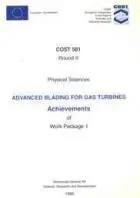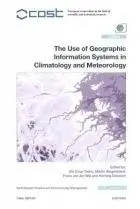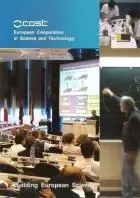
Sewage Sludge Prossessing

Preceived Needs of the Elderly about Mobility Vol 7

Antennas in the 1990s

Advanced Blading for Gas Turbines - Achievements of Work Package 1

Methods for the Planning and Evaluation of Multiservice Telecommunication Networks - Final Report

COST Expert Flyer
This COST Expert flyer explains how you can express your interest in becoming a COST Expert to participate in the evaluation of proposals.

Culture in, for, and as Sustainable Development - Conclusions from the COST Action IS1007 - Investigating Cultural Sustainability
- Pages: 72
- Author(s): Dessein, J., Soini, K., Fairclough, G., Horlings, L. (Eds.)
- Publisher(s): University of Jyväskylä
- Download PDF
- http://www.culturalsustainability.eu/conclusions.pdf
Culture matters in sustainable development. Yet, almost 30 years after the Brundtland publication “Our Common Future”and despite a few recent attempts by transnational and international organisations, and some cross-disciplinary and transdisciplinary scientific endeavours, the incorporation of culture into sustainability debates seems to be great scientific and political challenge, and one that questions the prevailing conventional sustainability discourses.

The Use of Geographic Information Systems in Climatology and Meteorology
- Pages: 245
- Author(s): OE. Tveito, M. Wegehenkel, F. van der Wel, H. Dobesch
- Publisher(s): Office for Official Publications of the European Communities
- http://bookshop.europa.eu/uri?target=EUB:NOTICE:QSNA23461:EN:HTML
- ISBN/ISSN: 978-92-898-0045-7
- EUR: 23461
The COST Action 719 has started in 2001 with18 European countries participating. There are manifold objectives of the Action, however, the main should be mentioned as follows: – establishing interfaces between GIS and meteorological data in close cooperation with the GIS industry; – assessing the availability, contents and accessibility of meteorological and climatologically data sets; * encouraging and fostering European co-operation in the development of operational applications of GIS in meteorology and climate research; * strengthening the links between the National Meteorological Services NMS), the research community as well GIS industry. Some of the expected benefits are: 1. better and more cost-effective production of state of the art meteorological and climatologically information, 2. improvement of the cooperation between European countries in the application of GIS in the field of meteorology, climatology and other environmental sciences 3. Better trained personnel within the operational and scientific divisions of NMSs.
The tasks are carried out within three working groups. Data access and data availability of all kind of GI data, monitoring the development in GIS technology and establishing the standardised interfaces between GIS and meteorological data is done by Working Group 1. The Working Group 2 covers the scientific program by its activity on spatial interpolation and Working Group 3 is developing recommendations for standardised GIS applications. In this area the applications have been already adopted focusing on three parameters, i.e. precipitation, temperature and energy balance. The three demo projects/case studies referring to the parameters have been formulated, namely: – Mapping the Precipitation Using Combined Information from Satellite Data, Mesoscale Forecast Models and Ground Measurements (Synoptic and Climatologic) – a GIS Approach – Spatialisation of Temperature in Alpine Regions – Energy Balance: Prediction of Road Surface Temperature Additionally, the tasks such as the development of a visualisation system for climate data sets for Internet application are under preparation. The presentation will provide the information concerning the work progress on demo projects made within COST 719.

